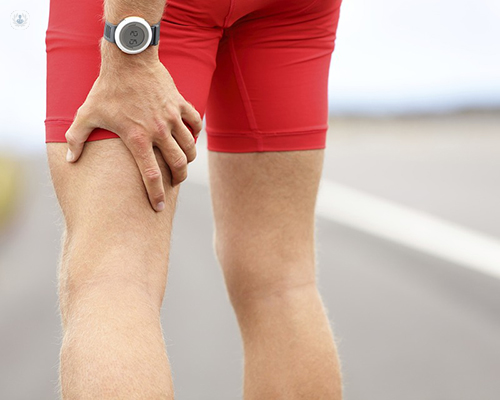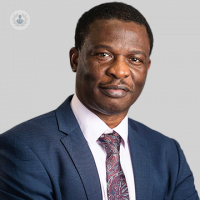Leg pain while walking? It might be claudication
Written in association with:Claudication causes different pains when walking, stops when you rest, and it is a symptom of a bigger issue. Mr Akin Oluwole, a highly experienced consultant vascular and endovascular surgeon, introduces claudication and important information.

What is claudication?
Claudication (vascular claudication) is aching or cramp like pain that affects your calf, thigh, and/or buttocks when you walk and stops when you rest. It is an early sign of peripheral arterial disease (PAD). It occurs as a result of narrowing or blockage of the arteries that supply blood to the legs. When you walk, the leg muscles need increased blood supply, but when the supply is not meeting the demand, the muscles go into cramps. That is claudication. You may be at risk of PAD if you smoke, suffer with hypertension or diabetes, have high cholesterol, or family history of cardiovascular disease.
What does it feel like?
Claudication pain can vary from mild to severe. It usually starts with ache, discomfort while walking, and cramps. As it progresses, it makes your legs feel heavy, tired, giving way on you or limping. You will notice that you can no longer walk as far as you like without stopping and it is worse on an incline or when you walk fast. Severe cases can cause numbness.
How is it diagnosed?
It is important to differentiate vascular claudication from other conditions that may cause pain in the legs like spinal stenosis, nerve root compression, peripheral arterial neuropathy with diabetes, chronic compartment syndrome, muscle strain, venous claudication and in younger athletic people, popliteal entrapment.
- The first step is to take a good history and detailed examination.
- Ankle brachial pressure to determine the pressure of blood in your legs before and after exercise.
- Treadmill test to have an objective determination of the claudication distance.
- Arterial duplex scan.
All the above can be done in the clinic and are usually enough to inform the initial treatment advice.
Other useful diagnostic tests are
These are usually required when more invasive treatments are considered.
Treatment options
- Lifestyle Modification
The first step is to modify your risk factors: stop smoking, control blood pressure, reduce lipids, and eat a healthy balanced diet.
- Exercise Therapy
Exercise therapy is an effective initial treatment option for the easing of pain caused by narrowed arteries (claudication). PAD can make it difficult to walk and participate in day-to-day activities which can impact quality of life. A supervised regimen of exercise, if available in your area, is the best but if not, walking 30 to 40 minutes every day and walking through the pain barrier is a highly effective way of reducing the severity of PAD symptoms and improve mobility and independence.
- Medical Therapy
The use of certain medications in combination with exercise therapy and other lifestyle changes can reduce the need for more invasive treatments. These include statins, which reduce the amount of cholesterol in your blood; anti-hypertensives that reduce your blood pressure; antiplatelets such as aspirin or clopidogrel; and a drug called naftidrofuryl oxalate which can improve the blood flow in your body.
- Angioplasty / stenting
During an angioplasty, a catheter is inserted into the affected artery under local anaesthetic. A balloon is then fed through the catheter and inflated to squash the atheroma (fatty deposit) into the vessel wall, which widens it. It is normal to feel some pain during the procedure, but this should go away when the balloon is deflated. It is also common to feel a slight change to your heartbeat while the operation is performed. The whole procedure generally takes between 30 minutes to 2 hours to complete and many patients can go home same day.
A wire mesh tube called a stent may be inserted at the same time as an angioplasty, which helps to keep the artery widened. If you have a stent, you will need to take certain medications afterwards to reduce your risk of blood clots.
- Bypass Surgery
When other treatment options are unsuitable or have not been successful, a bypass graft may be performed. A synthetic vessel or a healthy vein from your leg or arm can be grafted (attached) to the diseased artery, which allows the blood to bypass the blockage. This is performed under general or spinal anaesthetic and takes between two to four hours. For most patients, this surgery will decrease pain, decrease the future risk of amputation of the limb, and improve mobility—particularly when this is complemented with lifestyle changes, such as quitting smoking or improving your diet.
Are you experiencing leg pain when you are active and walking? Schedule a consultation with Mr Akin Oluwole via his Top Doctors profile.


